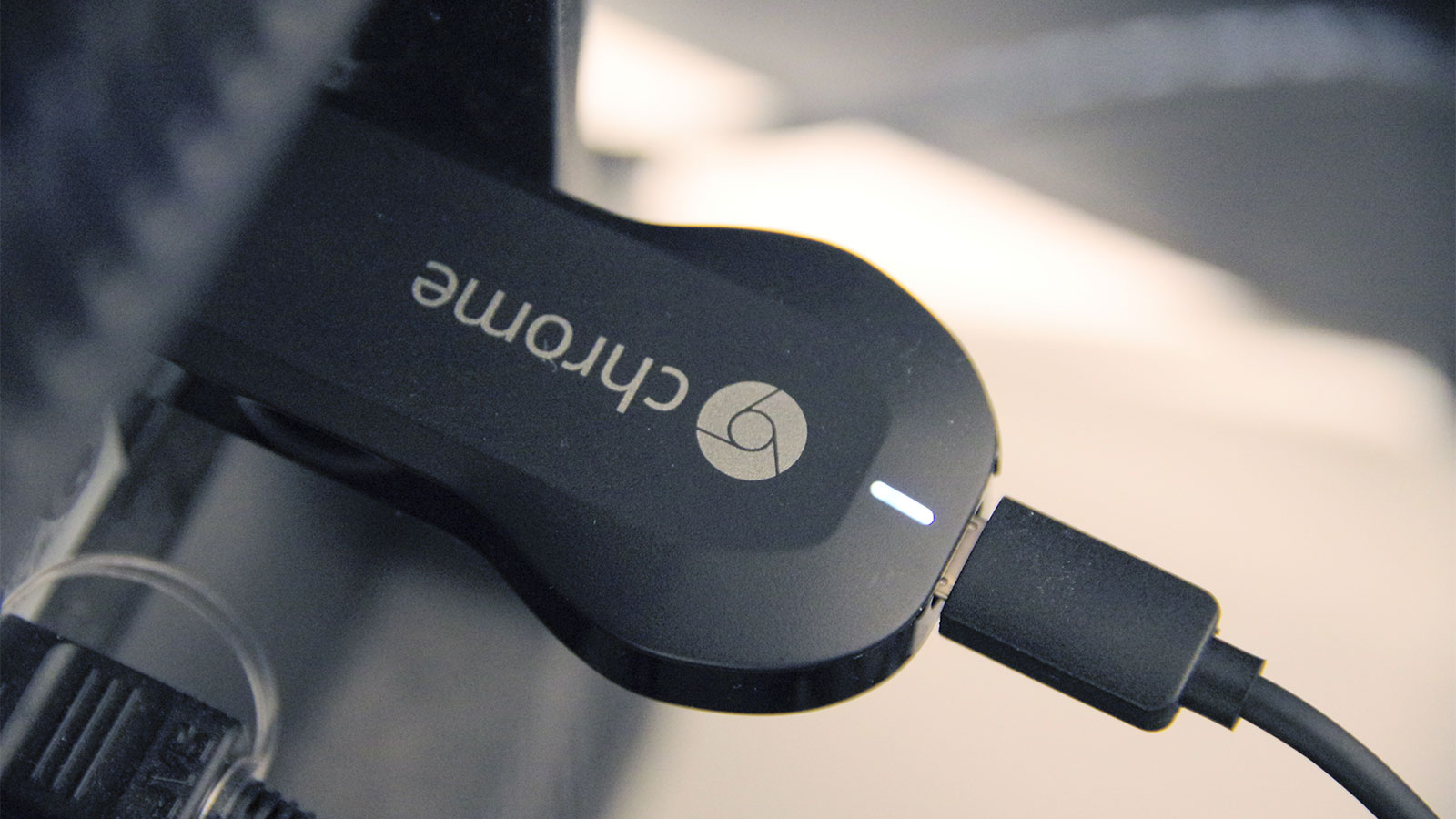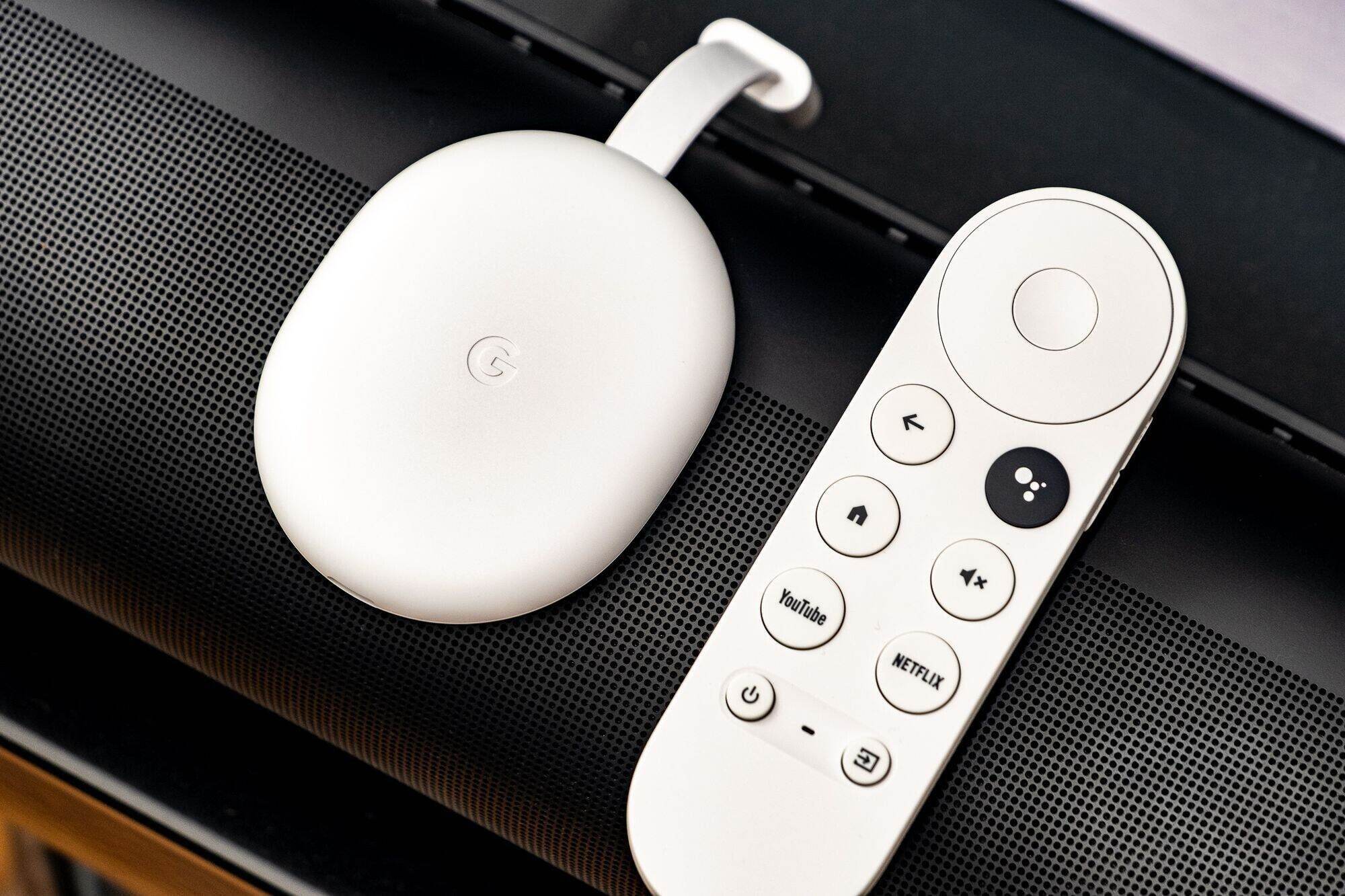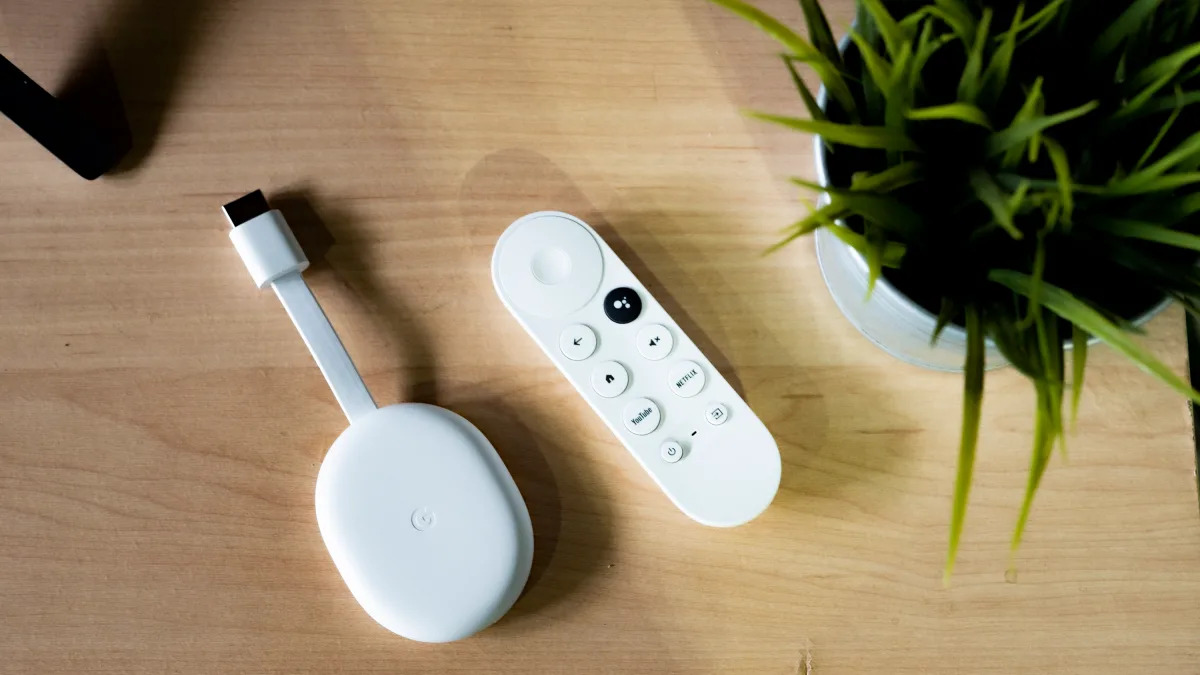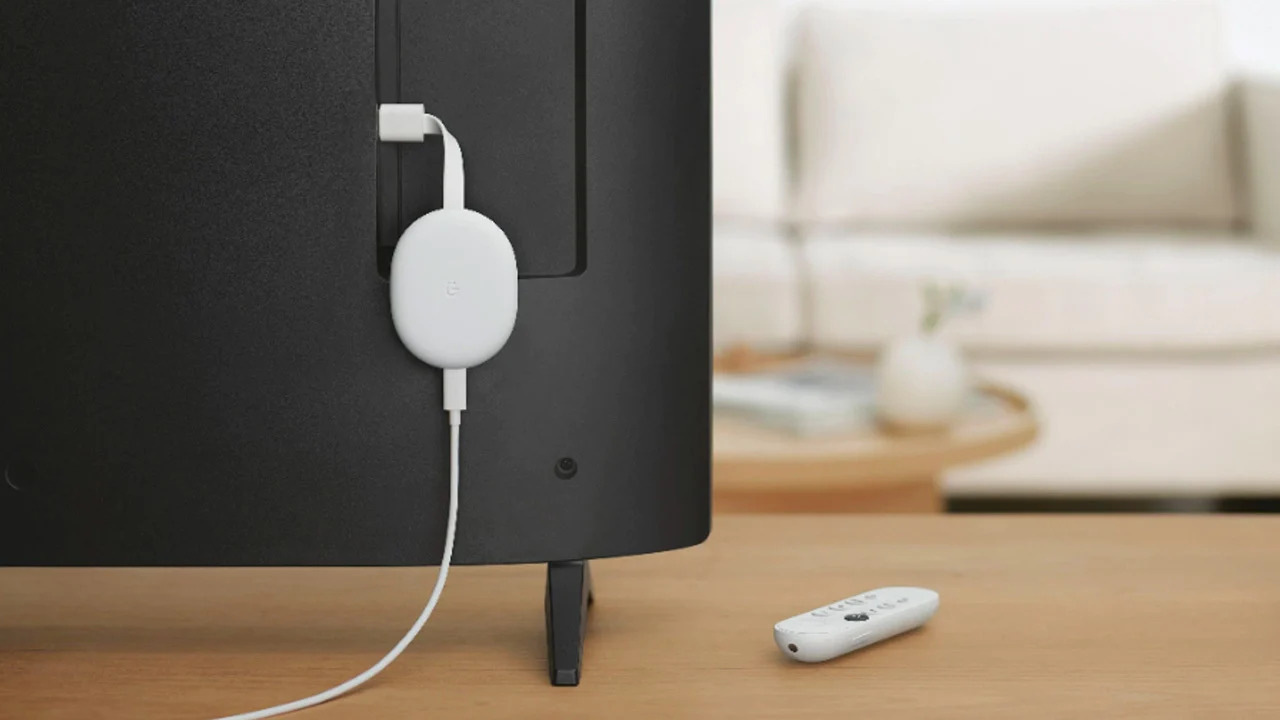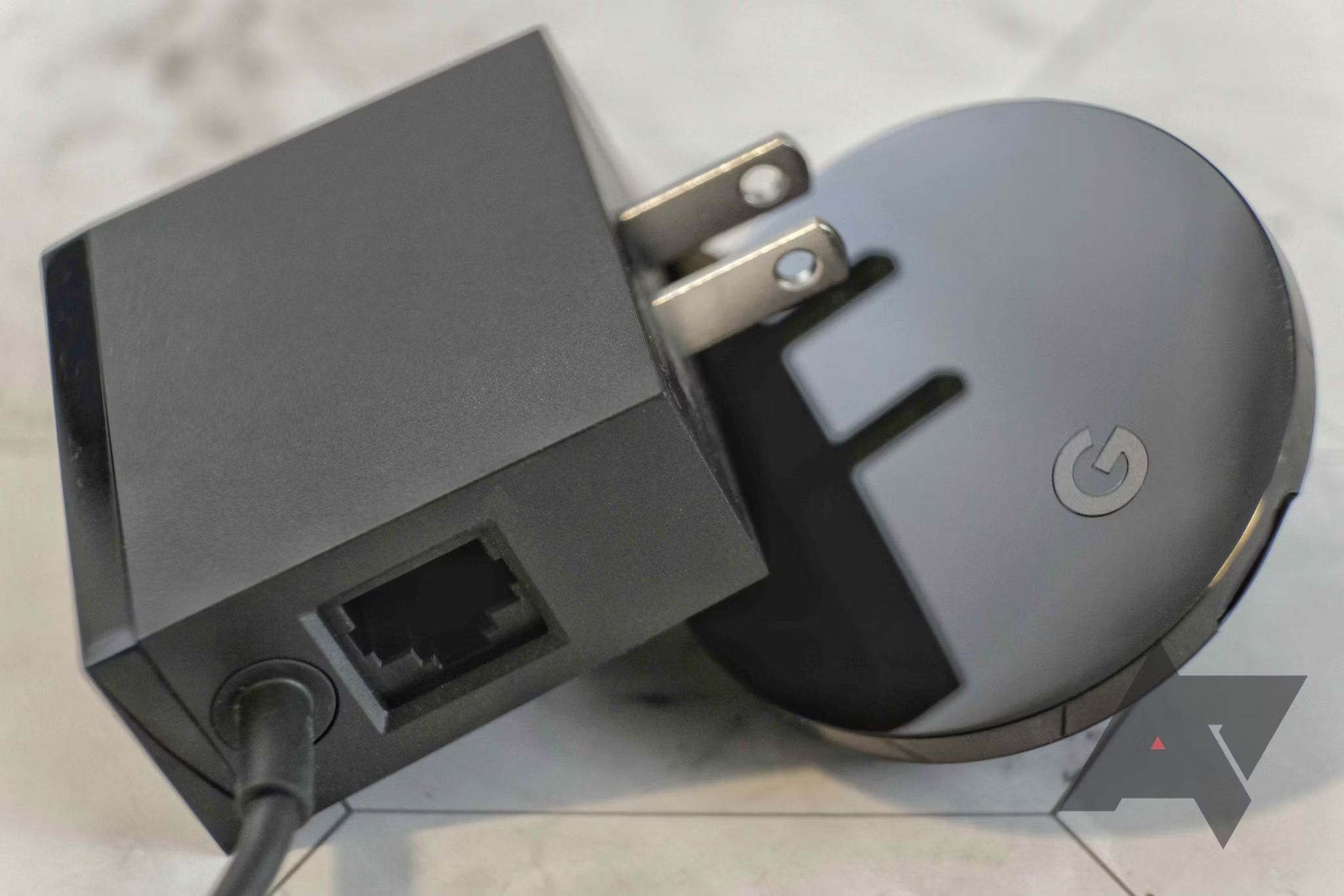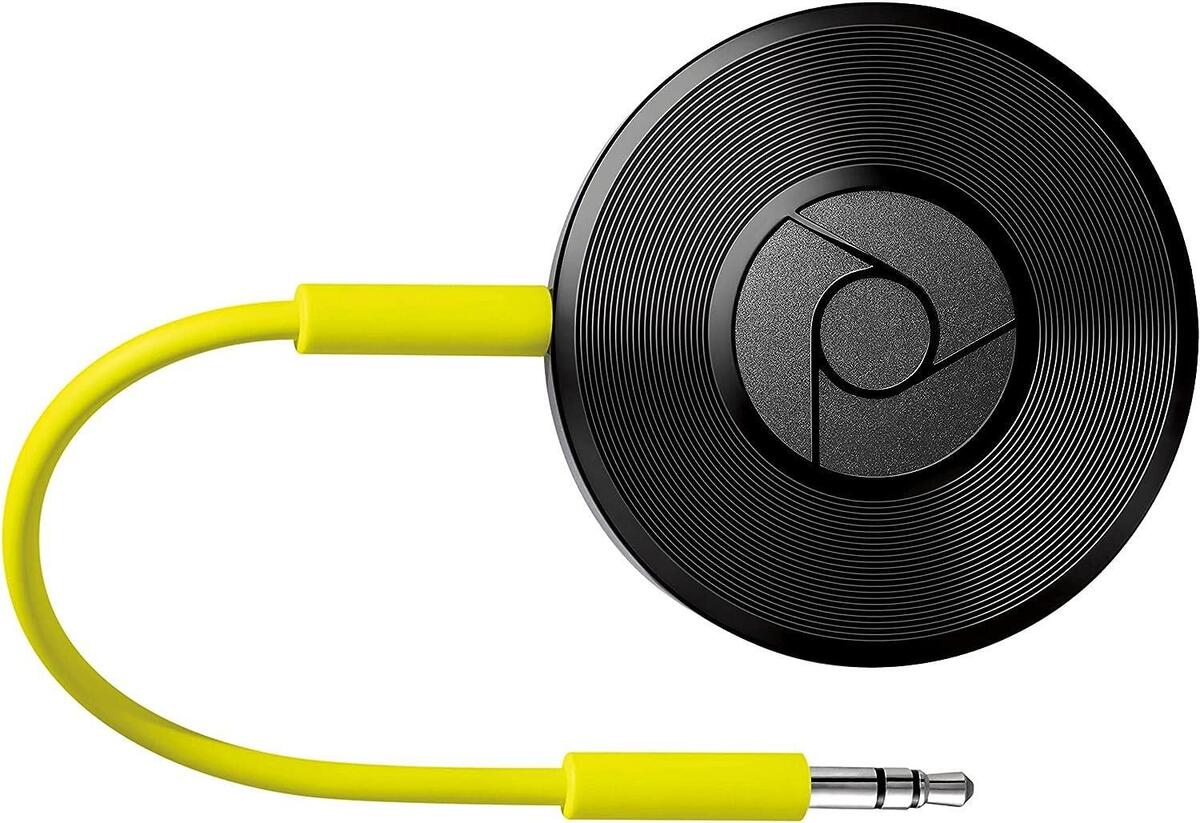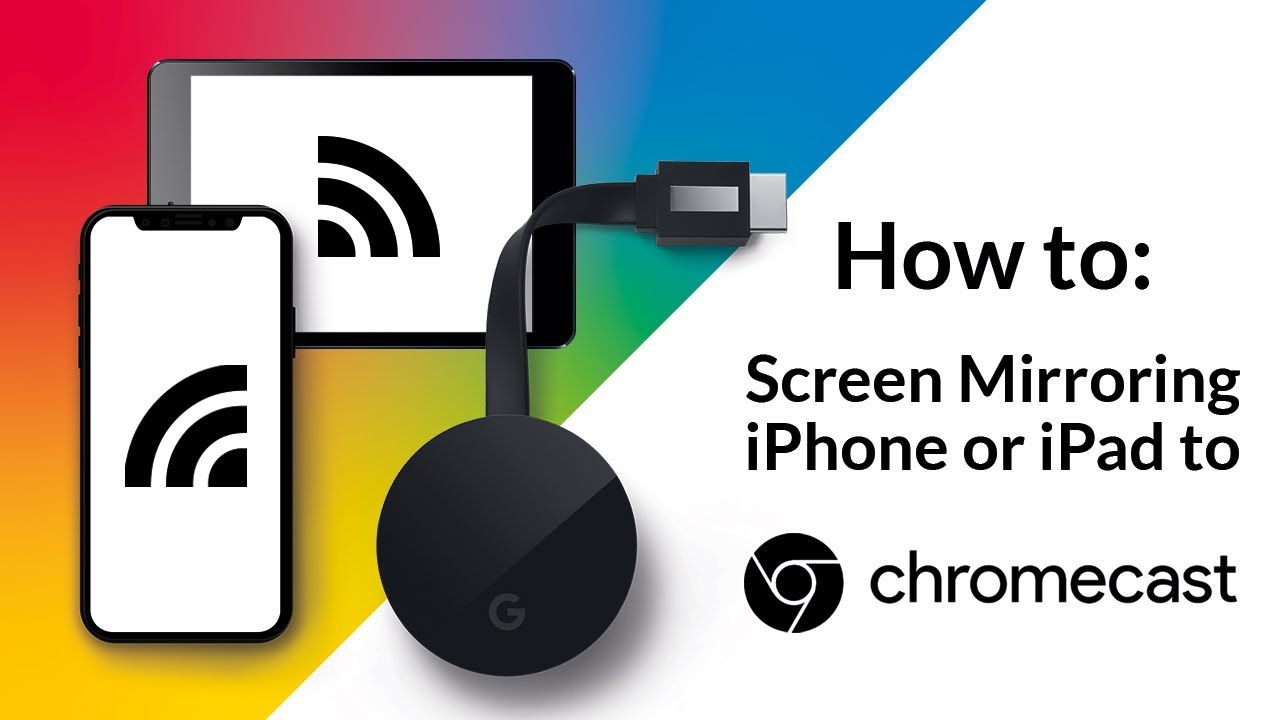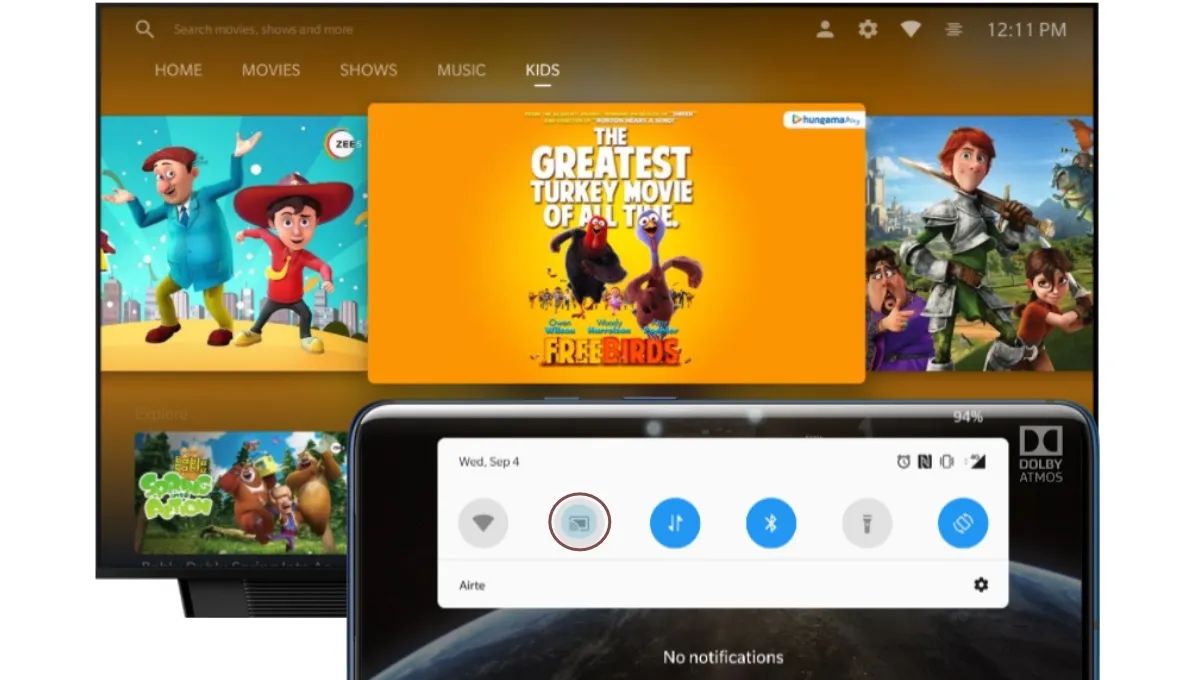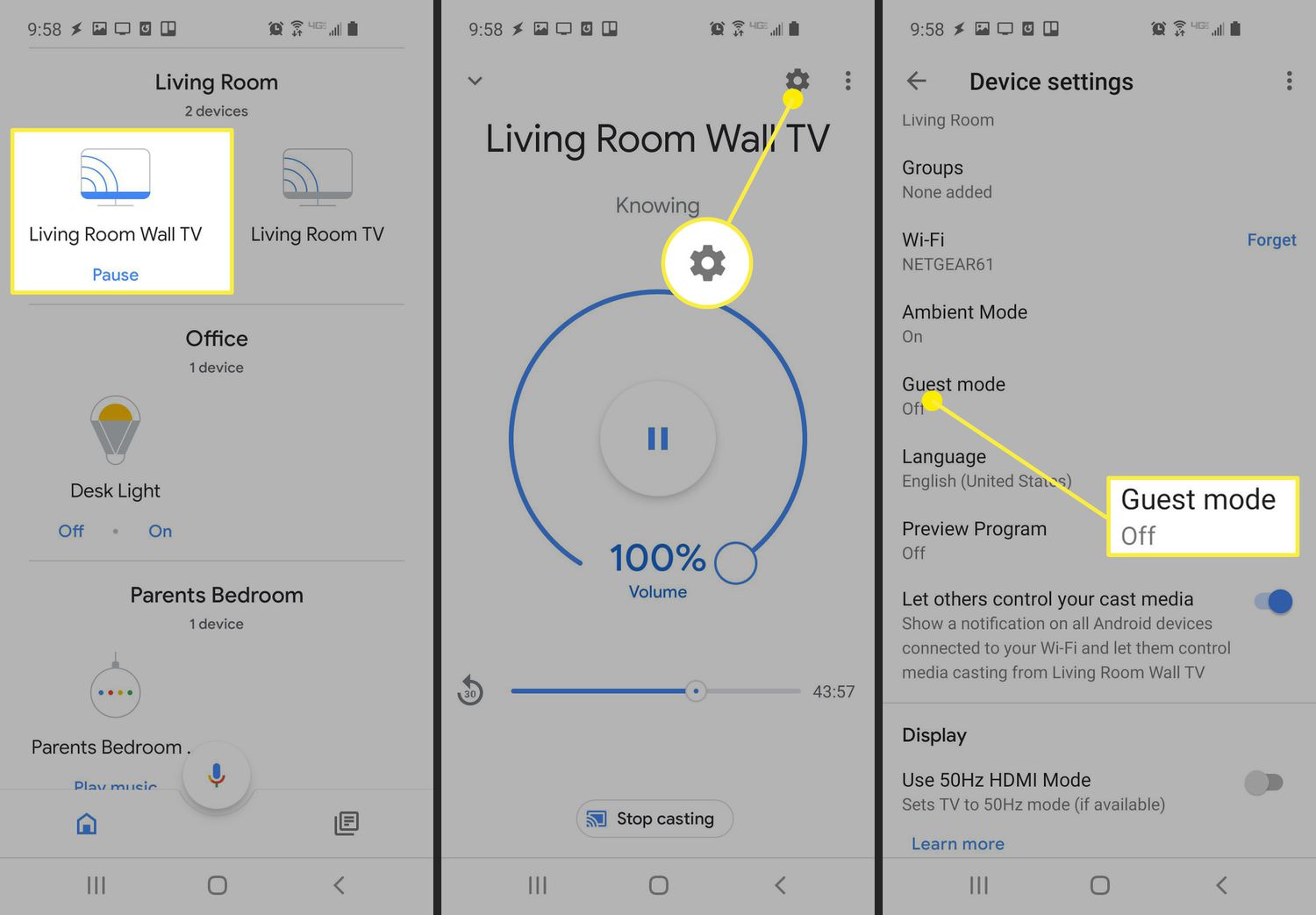Introduction
Welcome to the world of Chromecast, a powerful device that brings the world of streaming and smart TV capabilities to any television. Whether you are a technology enthusiast or simply looking to upgrade your entertainment experience, understanding how a Chromecast works is essential.
Chromecast is a small device that connects to your television’s HDMI port, allowing you to stream videos, movies, music, photos, and even web pages from your smartphone, tablet, or computer. This versatile device combines the best of both worlds, with the convenience of mobile devices and the visual experience of a big screen display.
With a Chromecast, you can now enjoy your favorite content from popular streaming services like Netflix, YouTube, Spotify, and many more, all directly on your TV. Say goodbye to squinting at your phone or tablet and rejoice in the immersive entertainment that Chromecast delivers.
But how does a Chromecast work? In the following sections, we will delve into the inner workings of this nifty device, explore how to set it up, connect your devices, cast content, and troubleshoot any common issues that may arise.
What is a Chromecast?
A Chromecast is a small streaming device developed by Google that allows you to stream audio and video content from your mobile devices or computers to your television. It is a cost-effective alternative to smart TVs, as it transforms any regular TV into a smart TV with streaming capabilities.
The Chromecast device itself is compact and plugs directly into your television’s HDMI port. It is powered either by the TV’s USB port or through an external power adapter, depending on the model. Once connected, it seamlessly integrates with your home Wi-Fi network, enabling you to cast content from various sources to your TV.
One of the key features that sets Chromecast apart is its ability to stream content directly from your devices. Instead of relying on a remote control, you control playback using your smartphone, tablet, or computer as a remote. This means you can easily browse for content, adjust volume, and pause or resume playback without interrupting what’s on the screen.
Unlike other streaming devices, Chromecast does not have a dedicated user interface or app store. Instead, it serves as a conduit between your mobile devices or computer and the content you want to watch or listen to. This allows for a more seamless and personalized streaming experience, as you can choose from a wide range of compatible apps and streaming services.
Another advantage of Chromecast is that it supports multi-room audio. With a compatible setup, you can play music synchronized across multiple speakers or TVs throughout your home. This makes it an ideal choice for those who want to create a whole-house audio experience.
Overall, a Chromecast is a versatile and affordable streaming device that brings convenience and entertainment to your living room. It allows you to enjoy your favorite content on a bigger screen, control playback from your devices, and seamlessly integrate with other smart home devices. Now that we understand what a Chromecast is, let’s explore how it works and how to set it up.
How does a Chromecast work?
At its core, a Chromecast utilizes a technology called “casting” to wirelessly stream content from your mobile devices or computer to your TV. When you choose to cast something from a compatible app or web page, the Chromecast acts as a receiver, pulling the content from the internet and displaying it on your television.
When you initiate a cast from your device, it sends a command to the Chromecast, instructing it to fetch the specific content you want to watch or listen to. The Chromecast then contacts the respective content provider’s servers, directly establishing a connection to stream the content in real-time.
Once the connection is established, the Chromecast takes over the streaming process, pulling the content from the internet and displaying it on your TV using the HDMI input. This means that your mobile device or computer is no longer directly involved in streaming the content, allowing you to continue using it for other tasks without any interruptions.
One of the key advantages of this setup is that it offloads the computational workload to the Chromecast, ensuring smooth playback even for high-definition videos. It also reduces the strain on your device’s battery life, as the streaming is handled by the Chromecast itself.
While the Chromecast is responsible for the streaming process, it relies on your mobile device or computer to act as a remote control. Through the compatible app or web page, you can browse and select content, adjust the volume, play or pause, and perform other control functions – all wirelessly.
It’s important to note that the Chromecast uses your home Wi-Fi network to establish a connection and stream content. Both the Chromecast and your casting device need to be connected to the same Wi-Fi network for seamless communication. This ensures a stable and lag-free streaming experience.
In addition to streaming content from compatible apps and websites, the Chromecast also supports a feature called “Tab Casting.” This allows you to mirror the entire screen of your device onto your TV. It’s useful for showing presentations, browsing the internet, or playing unsupported media from your device.
Now that we have explored how a Chromecast works, let’s move on to the next section and learn how to set it up for the first time.
Setting up a Chromecast
Setting up a Chromecast is a straightforward process that can be done in just a few simple steps. Here’s a step-by-step guide to get you started:
- First, unbox your Chromecast and connect it to your TV’s HDMI port. Make sure to plug it into an available power source using the included power adapter or the USB port on your TV.
- Using your TV’s remote control, switch the input source to the HDMI port where your Chromecast is connected.
- Turn on your TV and open the Google Home app on your casting device (smartphone, tablet, or computer). If you don’t have the app installed, you can download it from the respective app store.
- The Google Home app will guide you through the setup process. Ensure that your casting device is connected to the same Wi-Fi network as your Chromecast, as they need to be on the same network for communication.
- Follow the prompts on the app to set up your Chromecast. This includes connecting the Chromecast to your Wi-Fi network, choosing a device name, and agreeing to the terms and conditions.
- Once the setup is complete, the Chromecast is ready to use. You will see a welcome screen on your TV, indicating that it is connected.
That’s it! Your Chromecast is now set up and ready to cast content to your TV. You can now enjoy a wide range of streaming options, including movies, TV shows, music, and more. Remember that to stream content, you need to have compatible apps installed on your casting device.
If you have multiple Chromecast devices in your home, you can repeat the setup process described above for each Chromecast and give them unique names to easily identify and cast to the desired device.
Setting up a Chromecast is a simple and quick process, allowing you to start enjoying your favorite content on the big screen in no time!
Connecting your devices to a Chromecast
Once you have set up your Chromecast, the next step is to connect your devices (smartphone, tablet, or computer) to it and start casting content to your TV. Here’s how you can connect your devices to a Chromecast:
- Make sure that your casting device and Chromecast are connected to the same Wi-Fi network.
- Open the app or streaming service that you want to cast from on your device. Ensure that the app is compatible with Chromecast and supports casting functionality.
- Look for the casting icon within the app or streaming service. It is typically represented by a square with curved lines in the lower-left or upper-right corner of the screen.
- Tap or click on the casting icon, and a list of available Chromecast devices on your network will appear. Select the Chromecast that you want to cast to from the list.
- Once you have selected the Chromecast, the content will begin casting to your TV. You will see the content play on the big screen, while your device acts as the remote control.
- Use your device to control playback, adjust the volume, or perform any other functions supported by the casting app or streaming service.
- To stop casting, simply tap on the casting icon again and select “Stop Casting” or a similar option. Alternatively, you can also disconnect by turning off your casting device or closing the casting app.
It’s important to note that some apps may have slightly different interfaces for casting. However, the general process remains the same – look for the casting icon within the app and select your desired Chromecast device.
Keep in mind that while casting content, your device acts as a remote control, but it does not actually stream the content. The Chromecast handles the streaming process independently, freeing up your device for other tasks or even turning it off while the content continues to play.
Now that you know how to connect your devices to a Chromecast, let’s explore how you can cast content from different apps and services.
Casting content to your Chromecast
Casting content to your Chromecast is a breeze once you have set it up and connected your devices. Whether you want to watch a movie, stream music, or view photos on your TV, casting allows you to enjoy your favorite content on the big screen. Here’s how you can cast content to your Chromecast:
- Ensure that your Chromecast and the casting device (smartphone, tablet, or computer) are connected to the same Wi-Fi network.
- Open a supported app or streaming service on your casting device. Some popular examples include Netflix, YouTube, Spotify, and Google Chrome.
- Choose the content you want to cast. It could be a video, a song, a playlist, or even a web page.
- Look for the casting icon within the app or streaming service. It is usually located in the lower-left or upper-right corner of the screen.
- Tap or click on the casting icon, and a list of available Chromecast devices on your network will appear. Select the Chromecast device you want to cast to.
- The selected content will start playing on your TV through the Chromecast. You can control playback, adjust the volume, or even browse for other content using your casting device as the remote control.
- Enjoy the content on the big screen and use your casting device to control the playback as desired.
- To stop casting, tap on the casting icon again and select “Stop Casting” or a similar option. The content will no longer play on your TV through the Chromecast.
You can cast content from a wide range of apps and services that are compatible with Chromecast. Whether it’s streaming videos, listening to music, or viewing photos, Chromecast offers a versatile casting experience.
It’s important to note that the casting capabilities vary from app to app. Some apps may allow you to cast videos or music directly from the app, while others may require you to initiate casting from within the content itself.
Additionally, if you prefer to cast content that is not supported by a specific app, you can use the “Tab Casting” feature, which allows you to mirror the entire screen of your casting device onto the TV. This enables you to cast any content that you can access on your device, including web pages, presentations, and more.
Now that you know how to cast content to your Chromecast, let’s explore some popular apps and streaming services that are compatible with this versatile device.
Supported apps and streaming services
Chromecast supports a wide range of apps and streaming services, giving you access to a vast library of content to cast to your TV. Here are some popular apps and streaming services that are compatible with Chromecast:
- Netflix: Stream your favorite movies, TV shows, and documentaries directly from the Netflix app to your TV with Chromecast.
- YouTube: Watch your favorite YouTube videos, subscribe to channels, and explore trending content on the big screen.
- Spotify: Play your favorite music, create playlists, and discover new artists with Spotify’s vast music library, all cast to your TV for an immersive audio experience.
- Hulu: Stream popular TV shows, movies, and original content from Hulu’s extensive collection using your Chromecast device.
- Disney+: Enjoy exclusive Disney, Pixar, Marvel, Star Wars, and National Geographic content, including movies, series, and documentaries on your TV.
- HBO Max: Access a wide range of HBO and WarnerMedia content, including blockbuster movies, series, and original programming.
- Google Play Movies & TV: Rent or buy movies and TV shows from the Google Play Store and cast them to your TV for a cinematic experience.
- Amazon Prime Video: Stream movies, TV shows, and original series from Amazon Prime Video’s vast library using Chromecast.
- Pandora: Listen to personalized radio stations, discover new music, and enjoy your favorite songs on your TV through Chromecast.
- Google Photos: Cast your favorite photos and albums from Google Photos to relive your memories on the big screen.
These are just a few examples of the many apps and streaming services that support Chromecast. The compatibility of Chromecast continues to expand, providing an ever-growing selection of content to enhance your viewing and listening experience.
In addition to these apps, many popular web browsers, such as Google Chrome, Firefox, and Microsoft Edge, have built-in casting capabilities. This allows you to cast web pages, online videos, and other internet content to your TV through Chromecast.
Keep in mind that some apps and streaming services may require a separate subscription or premium account to access certain content. Ensure that you have the necessary subscriptions or accounts set up to enjoy a seamless casting experience.
With the increasing popularity and demand for Chromecast, the range of compatible apps and streaming services continues to grow, providing an extensive selection of content for everyone’s tastes and preferences.
Troubleshooting common issues with Chromecast
While Chromecast is designed to provide a seamless streaming experience, you may occasionally encounter some common issues. Here are a few troubleshooting steps to help resolve these issues:
- No audio or video: Ensure that the HDMI cable is securely connected to both the Chromecast and your TV. Try using a different HDMI port on your TV or test the Chromecast on another TV to rule out any HDMI-related issues.
- Poor video quality or buffering: Check your internet connection speed. A slow or unstable connection can result in poor video quality or buffering. Consider moving your router closer to the Chromecast device, or connect to a more stable Wi-Fi network.
- Chromecast not being recognized: Make sure that your casting device and Chromecast are connected to the same Wi-Fi network. Restart both your casting device and Chromecast, or try using a different device to cast.
- Chromecast not connecting to Wi-Fi: Ensure that you have entered the correct Wi-Fi password during the setup process. You can also try restarting your router and Chromecast, or perform a factory reset on the Chromecast and set it up again.
- Delayed or unresponsive controls: If there are delays or unresponsiveness when using your device as a remote control, check the battery level of your casting device. A low battery can cause lag or unresponsiveness. You can also try closing unnecessary apps running in the background.
- Chromecast not appearing on the device list: Ensure that the casting device and Chromecast are connected to the same Wi-Fi network. Disable any VPN or proxy services running on your casting device, as they may interfere with the connection.
- Streaming app or service not working: Check for any pending app updates or try reinstalling the app. Restart your casting device and Chromecast to refresh the connection. If the issue persists, reach out to the app’s support team for further assistance.
If you encounter any other issues with your Chromecast, such as overheating, power-related problems, or unusual behavior, refer to the official Google Chromecast support website for detailed troubleshooting guides and solutions.
Remember, keeping your Chromecast and casting devices up to date with the latest firmware and app updates can help prevent and resolve many issues. Regularly check for updates and install them when available to ensure the best performance and compatibility.
By following these troubleshooting steps, you can overcome common issues and enjoy uninterrupted streaming with your Chromecast.
Conclusion
Chromecast is a versatile and affordable device that brings the power of streaming and smart TV capabilities to any television. With its easy setup process and support for a wide range of apps and streaming services, Chromecast offers a convenient and immersive entertainment experience.
In this article, we explored what a Chromecast is and how it works. From seamlessly streaming content to controlling playback using your mobile devices or computer as a remote, Chromecast offers a user-friendly and intuitive casting experience.
We covered the essential steps to set up a Chromecast, connect your devices to it, and cast content to your TV. Whether you want to watch movies, listen to music, or view photos, Chromecast provides a seamless and enjoyable way to enjoy your favorite content on the big screen.
We also discussed some of the supported apps and streaming services that are compatible with Chromecast, giving you access to a vast library of content to enhance your entertainment options.
Lastly, we provided troubleshooting tips to help you overcome common issues that you may encounter with your Chromecast. By following these steps, you can resolve many common issues and enjoy a smooth and uninterrupted streaming experience.
As Chromecast continues to evolve and support new features, it ensures that you have access to the latest entertainment options and a growing ecosystem of compatible apps and services.
So, whether you are a movie lover, music enthusiast, or just looking to upgrade your TV experience, Chromecast is a fantastic device that offers convenience, versatility, and endless entertainment possibilities.







